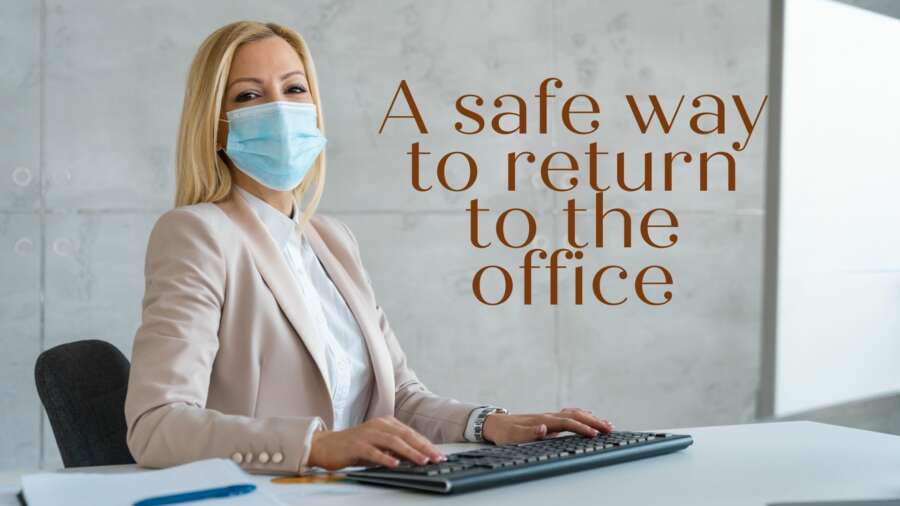
By Professor Denis Kinane, Professor in Immunology and a co-founder of Cignpost Diagnostics.
The effects of the last year have had a severe and long-lasting impact on businesses ever since the Government’s first Covid-19 lockdown in March 2019. Millions of employees in organisations across the country found themselves almost immediately dispatched from their offices to begin working from home.
Although some organisations found benefits from this enforced separation, others found that working from home had a significant impact on productivity and mental health. As businesses struggle to understand how to support staff and address ‘wellness’ related issues, there is now an eagerness to help staff back into the office safely. Our recent research, conducted by Yonder, found that the number one motivation for businesses wanting to return their staff to the office was a concern over mental health and loneliness. With the rapid vaccine roll out and the end of lockdown in sight, businesses want to find a way for a quick but safe return to the office.
Many businesses will simply wait until nearly everyone has been vaccinated and the R number of COVID-19 cases is consistently negligible, others will wish to return some, or all, of their employees to the office far sooner. However, these businesses now find themselves unsure of the practical steps that they can take to ensure a safe working environment. While the Government has provided detailed guidance for how weddings, night clubs and sporting events can restart, there has been little information on how the vast majority of office-based organisations should proceed, other than the recommendation that working from home should continue as the norm until at least 17th June. With little advice beyond that date, many businesses will remain unclear of safe programmes to implement for a phased return.
Additionally, businesses find themselves bound to their legal duty of care to protect their staff from harm. What CEO would want to ask — or even insist — that everyone returns to the office only to see a Covid-19 outbreak that led to massive workforce disruptions, hospitalisations and worse? There also remains a lot of confusion surrounding the different forms of testing, their effectivity, and importantly, the cost.
Organisations now find themselves tasked with a difficult decision – Do they wait Covid-19 out and delay an office return until the Autumn or do they prioritise getting back into the office now?
The unpredictable nature of the virus means that mutations will always be a possibility – what if this modifies the efficacy of the vaccine programme or causes an upsurge in infections? If businesses do not explore ways of getting back into the workplace, they could find themselves delaying their return indefinitely.
Perhaps, looking to the experience of the organisations that have already begun to return critical workers to the office is the best way to understand the options available. For these organisations, there were two starting points: deciding the best approach for vaccinated and unvaccinated employees; and determining the right testing environment that will provide the reassurance employees need to come back to the office.
Our research has shown that only one in four businesses have made a plan on how to return to the office. Part of the reason for that is confusion about the different types of testing and how to create Covid-safe work environments. There is a clear choice on testing. At one end, there are lateral flow tests that are cheap and produce results in minutes. While these are certainly cost-effective – the Government is even willing to supply them for free – the problem with lateral flow tests is that they miss a very significant proportion of positive cases. As such they can only ever give a “red light” about the highly infectious so businesses would need to continue using masks, social distancing and viral hygiene.
There is however an alternative. Gold standard PCR testing results can be produced in just a few hours. They come at a higher cost but have a significant advantage in that they offer the highest level of certainty – and that would give a “green light” that would enable employees to work without restrictions again.
Introducing a twice weekly PCR testing regime has already proved to be a successful and practical way to give staff and their families continuous protection amongst the major banks, film sets and elite sporting events.
However, it is not sufficient just to test employees and then send anyone testing positive back into isolation at home. What our clients need is one to one medical advice for those testing positive and their families as well as rapid follow up PCR Covid-19 tests to show when it is safe for them to return to the office. Similarly, companies that create safe environments in their offices, need to be able to work out how to handle anyone externally coming in to the office – contractors, visitors, supplier, family members or newly returning employees.
With the rapid roll out of the vaccine, we can now look ahead to a brighter future where businesses can once again flourish and society can open up further. But achieving that requires businesses to have a full understanding of the continuing risks and to develop a step by step Covid safety plan that will enable them to bring their employees quickly but safely back to the office.


